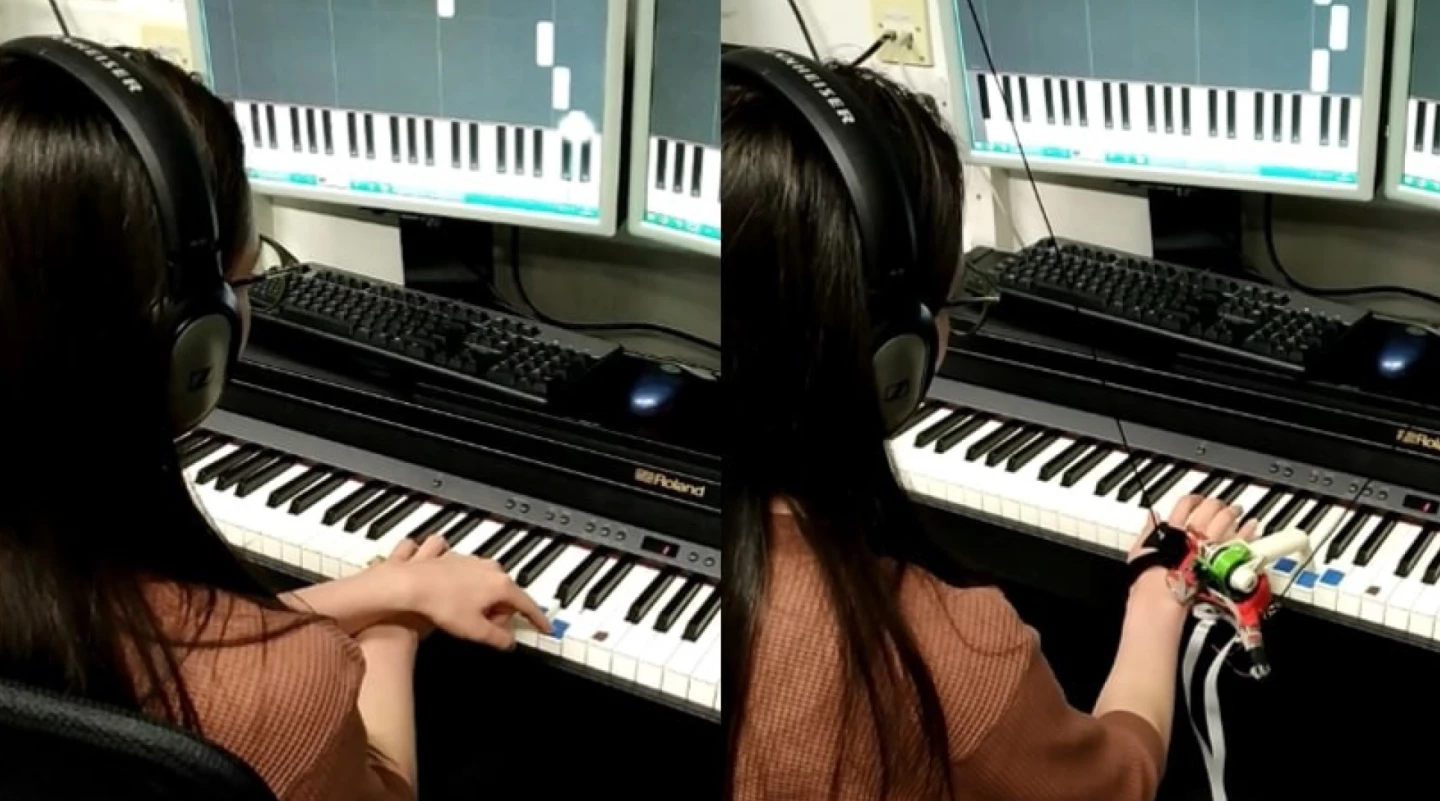Could an existing piano player adapt to playing the instrument with an extra, robotic thumb? A new study suggests that the answer is yes, and interestingly enough, even people who are new to the piano are equally adept at using the added appendage.
For the project, an Imperial College London team led by Prof. Aldo Faisal recruited 12 right-handed test subjects. Six of the people were experienced piano players, while the other six didn't know how to play the instrument.
Each person was equipped with a device that was strapped onto their right hand, adding a Supernumerary Robotic 3rd Thumb (SR3T) to the right of their little finger – in other words, the robotic thumb was located opposite their existing thumb. It was operated by moving the right foot up and down or to either side, with a shoe-mounted inertial measurement unit (IMU) detecting the movements.

It was found that when instructed to perform eight electric-piano-playing tasks, both the experienced and inexperienced volunteers adapted to the thumb within one hour, using it to help perform those tasks.
"To our surprise, it turns out having piano playing experience is not a strong predictor of how well you will play with 11 fingers," says Faisal. "Instead, we discovered that your basic ability to move and control your body, your dexterity, and your agility is a much better predictor for being able to use this technology and play the piano with extra fingers."
The scientists now plan on exploring the use of a complete robotic third arm, which will be controlled by brain waves instead of foot movements. It is hoped that their findings could be used to guide the development of future robotic body-worn devices, such as prosthetic limbs and assistive exoskeletons.
A paper on the research was recently published in the journal Scientific Reports.
Source: Imperial College London





